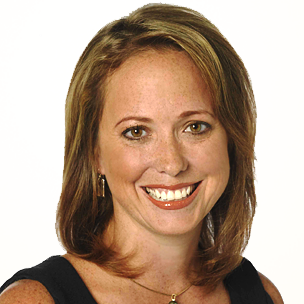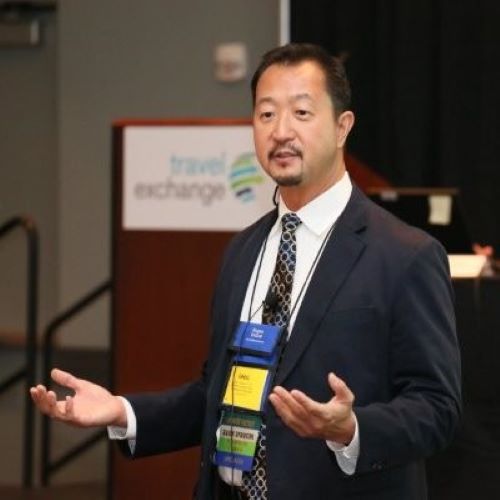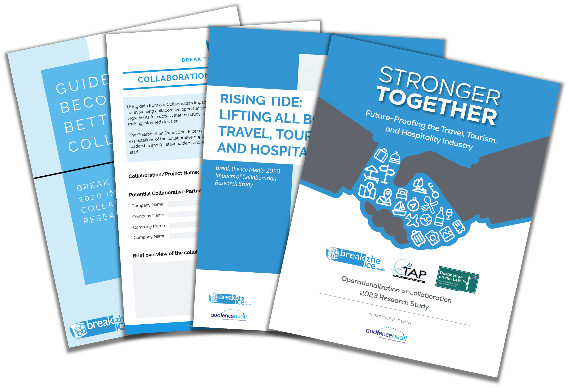Stacy Jones
Episode 82: Stay on Track but Go with the Flow, with Stacy Jones
Celebrities and influencers post their amazing travel and adventure on social media all the time. Often, that is not by accident. Product placement and influencer marketing can bring attention and interest to your hotel or travel destination.
In today’s episode, we talk with Stacy Jones, who has been doing product placement and influencer campaigns for over 20 years. We talk about the creative process of working with celebrities and influencers (pro tip: get everything in writing!) It’s a fascinating conversation about a marketing tactic you may not have thought of – but which has such potential!
Stacy is the CEO of Hollywood Branded. She has over 20 years of leadership experience building global entertainment branding campaigns for top Fortune 500 companies and hundreds of brands. Her career started after receiving her BFA in theater production and scenic design from the University of Arizona.
Stacy is an adventurer at her core. From skydiving, to hang gliding, trekking Mayan ruins in Belize, Stacy has explored the ocean as an avid scuba diver. She lives out loud, that’s for sure.
More on Stacy’s Background
Thank you so much for joining me, Stacy.
Thanks, Nicole, so much for having me.
I just love your bio. It’s perfect for our audience because we’re all about travel, tourism, and adventure. I love the many different places you’ve been and your adventurous spirit. So I’m looking forward to learning more from you today. Before we dive into the questions, can you just share a little bit more about your story in your own words, and how you got to where you are today?
Absolutely. So, way back when, going beyond 20 years now, I came out to Hollywood, and I started working and ended up at an entertainment marketing agency specializing in product placement, and product placement back then, no one knew what it was. In fact, I would go on a business trip and the taxi driver would say, “Oh, so where are you going?” And I’d say, “New York,” or wherever it was. And they’d say, “Well, what do you do for a living?” And I’d say, “Product placement.” And they’d look at me, and just stare at me quizzically, and have no comment to say what I might be.
In fact, at the time, when I was applying for the job, my mother said, “Product placement? Why would you want to do that? You’re going to be in grocery stores turning cans towards the people walking by? Isn’t that product placement?”
So, there was a lot of a disconnect. And, you know, fast forward 20 years, pretty much everyone out there knows about product placement. They know about influencer marketing. They know about celebrity partnerships. So, the world’s really grown.
And after I worked at this agency, I ended up running it for about 10 years, hit that proverbial glass ceiling and moved on and started my own agency that had a few more legs going into those social influencer and celebrity partnerships that I just mentioned, because the celebrity partnerships were definitely there, but that social influencer, it was just, just there and beginning. It was very early days, still. And, so, for the last 10 plus years, Hollywood Branded has been established, and growing, and having a great time.
That’s really cool. I just always love to hear how the journey starts and how your experiences guide where you land.
Product Placement and Influencer Marketing
What I think is really interesting is this whole idea of product placement. Now, I’m in Rochester, New York. For a long time, Kodak was a very big deal. What we didn’t realize is that there was a lot of work that went into getting that, you know, Kodak mentioned in that movie or that product placement in that movie.
These days, that’s just so much more evident. You see it a lot more often, wouldn’t you say?
Well, I’m not sure you do see it a lot more, but you’re more aware of it happening, and the conversation is definitely there. Product placement’s been going on back in the days when they put a white undershirt on James Dean because sales had dropped off. Undershirt manufacturers were wondering what they were going to do. They dressed him in his undershirt and sales popped!
So, product placement has always been there. Product placement to the point like the show Survivor, where it was an integrated message into the scene, hit you over the head, this is the sponsor embedded in the conversation and the storyline; that is much more recent.
Unfortunately, a lot of that doesn’t go over so well, because people at home don’t really like being hit over the head with brands. Our agency works to make things very organic happen on screen, so the partnership looks natural. The brand can take it off screen and build out more of a 360 platform around it, leveraging their exposure and making the consumer feel that it was a very natural part of the whole story.
And when you mentioned Kodak, they were very active in product placement. They had an agency, and they were in-house as well, and they were all over Hollywood trying to get more exposure for themselves.
Absolutely. You know, I want to explore more about this and how you make it that natural part of the whole story, but before we do that, as you were describing and talking about how Survivor changed the level of awareness of how that is integrated, what about The Oscars?
I want to know about this year’s Oscars because I’ve got to tell you, I was watching the Oscars and it took me by surprise. It was a big anniversary, I know.
Yes, this was a major Oscars for them. It was the 90th anniversary. This was a fascinating Oscars to watch, and we had a partnership where I was able to be in the Dolby Theater the next morning, I had to line up at four AM to get in there for the Live with Kelly and Ryan television show. We had a partnership with them and White Cloud that cumulated with The Oscars, and their day after The Oscar programming.
But what was fantastic about the Oscars was the Kawasaki jet ski and the fact that Jimmy Kimmel brought that in and it was such a normal, natural play of product placement. I don’t think that it was paid for, it was just part of his skit, and that was great.
And then the candies that he brought in last year and he brought in this year again, with Mike & Ikes getting exposure. The Oscars are certainly bringing a new level of product placement into awards season.
Yes, I would totally agree. So, let’s talk a little bit about how you become a natural part of that story, and when you start working with a client, what’s the first step when you’re starting to think about how you can take advantage of this type of product placement or influencer marketing.
Sure. We will often work with different tourism boards, hotels, and resort partners, to look for ways that they can best leverage this whole world of celebrity and influencer, and there are three areas.
So, you have your social influencer, where you can look at micro or macro influencer programs. We did a really cool partnership with Pala Casino this last summer where we brought in over 20 different influencers from the micro to macro ranges and had two days where they were able to try out different activities on site, from dining to wine tasting, to learning how to play different casino games. It cumulated in a concert that night with a special feature that the hotel puts on throughout the summer. There were tons of different video takeaways, blogs, Instagram posts, Facebook posts. So that’s one level of it.
And then we also look at ways we can work with celebrities. So, right now we’re in the midst of working with a tourism board to bring in a celebrity to a specific hotel where that celebrity is going to stay with their family on an all-expense paid trip. And then they’re going to do an Instagram takeover. They’re also going to be able to do some meet and greets with guest visitors who sign up for this special experience.
So, in both of these instances, whether it’s a micro, a macro, or a celebrity influencer, or a real celebrity, we’re looking for what the goals are for that tourism partner. Who are they trying to speak with? When we were working with Pala Casino, they were looking to speak with a very specific geo center range. They didn’t need to get someone from New York. This is a location that’s near Temecula, California, so we had a certain mile radius where we were looking at influencers who had strong followings.
There are travel influencers who are going to certainly impact and affect people on a much broader level, but you’re mostly looking for your core user, your core follower, who might be writing about and sharing more about that location.
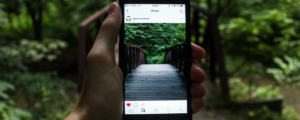
[bctt tweet=”“There are travel influencers who are going to impact people on a broader level, but look for your core follower, who might be writing about and sharing more about that location.” – @LADiverGirl #WhyCollaborate #podcast”]
For this other partnership that we’re doing with the resort for an island and the celebrity, we were looking for a celebrity partner here who had really national and even international awareness. There were some very specific countries of interest that we wanted to focus on besides the United States. We were looking for an opportunity where they had a very strong social following that they could push and leverage as well.
And then it was also tied into how could we potentially take that experience, and that resort, and then bring it into the arena of product placement. So we’re looking at talk shows where we could also amplify that experience into different TV programming from that.
We’re always looking at ways we can craft. We’re looking at the budgets of the tourism board or the resort travel partner. We’re looking at what their goals are, whether they want something that’s very localized, or rather they want something that’s national or something that is international.
We’re also looking at where their interests are. You know, we’ve done partnerships where it goes into music videos and looking for a certain type of music genre that really appeals to that base. We’ll explore holding different events at a hotel where we can bring in and actually have content filmed that can then be repurposed.
We look at opportunities with product placement where, if it’s a talk show, it’s a location giveaway. Or is it an actual shoot that the talk show is going and make it this massive awareness of that location? Or is it something that’s smaller, where it’s just a small crew that’s coming out, and they’re shooting a segment for a reality TV series, which can range from everything from a 15-person shoot up to 250 people. Or are we looking at pure branding, where we’re getting that travel partner embedded into a storyline of scripted content? Maybe it’s a sitcom, or it’s a drama, and someone’s wearing a sweatshirt of a hat that has the logo on it, or someone’s talking about a recent vacation.
We did something with Meet the Coopers, which was a Diane Keaton feature film a couple of years ago. There was an airport scene in which we created this giant billboard kind of poster inside the airport where two people that were main cast members met. You actually thought they were in a beach destination, which was Aruba until the camera panned out and you saw that it was a tourism ad with the Aruba tourism logo proudly embellished onto that wall-sized poster.
So, we try to get very creative with how we are positioning the brand within content, or with influencer celebrities.
So, it sounds like really being clear about your budget, and your goals and your target audience are key to finding something that’s going to be successful. Is that right? Does that sum that up pretty well?
That is a very good summary of what I’d started off saying before I rambled into other things, yes.
Influencer Marketing Goals
Oh, no, but it’s all good stuff. Now, if I’m a tourism board, or maybe a hotel or other type of attraction in the industry, what kinds of goals should I be thinking about for this type of marketing?
I do a lot of work in public relations, and I know you evaluate it in different ways depending on what the goals are. So what are some of the goals that someone might have in mind when they’re thinking about using social influencer campaigns or some of these other celebrity placements like you’re talking about?
We really try to get people to sit down and figure out what their KPIs are so that we can figure out what the goals are. That way we can figure out how to put a metric to what they’re looking for so that we can determine if the campaign was successful or not.
So, with social influencers you’re looking at new followers, you’re looking at shares, you’re looking at engagement, and then you’re also looking at content creation. One of the best things for influencers to do for a brand is to very authentically go in and give their take, and take photos, and make videos that can be repurposed and shareable by that entity throughout their own social networks. It can be shared on their website and other digital platforms so that they can raise that awareness and give a different take than what their advertising agency might do on their own.
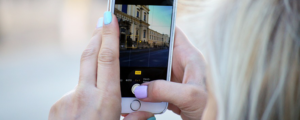
[bctt tweet=”“One of the best things for influencers to do for a brand is to go in and give their take, and take photos that can be repurposed and shareable by that entity throughout their own social networks.” – @LADiverGirl #WhyCollaborate #podcast”]
Another goal might be bookings. What is actually derived when you do a partnership? Do you end up with more room nights booked? There is a lot that falls into this because product placement at its base is great, as is social influencer partnerships, for brand awareness, but how else is the brand helping to push out and harness what they’ve just done? They need to leverage it to continue that awareness factor and encourage people to book.
So, just like with any traditional PR, or any traditional advertising, you know, one hit is not going to do everything. You’re going to see traction from it, you may see sales from it, but it’s about a multiplier effect.
Have you touched that target audience sometimes so that they are building their own awareness? So they’re using the affinity that they have towards whoever is promoting that destination, that location, to make it more top of mind? Will it make it more of something that is going to get them to pull the trigger and make a purchase?
Best Practices for Influencer Partnerships
I think that’s a really great point because it’s not just about a single one-off kind of project. You gave the example of the casino resort where you had 20 different influencers go. It’s not just about that one event, right? It’s about what you can do to extend that event. I think that that’s a really important point for our listeners to take away.
The other thing I’m struck by as you’re talking about this is you keep referencing it as a partnership. I’d like you to elaborate on that a little bit more because it’s not just a traditional media buy where I give you money, you give me X number of impressions. This sounds like there’s a little bit more give and take. Can you talk a little bit about how those partnerships work?
It can be challenging. Brands will come to us and ask, how much is it going to be to do A, B, C? Well, there is no rate card. Absolutely everything that my agency does is built, so there’s nothing that is just turnkey, here it is, let’s go. Every time we talk to a feature film, every time we talk to a celebrity, every time we talk to an influencer, there are so many different factors at play. We’re looking at trying to figure out how to build every single solitary partnership, and that’s what it is, a partnership, from scratch.
Also, when we’re working with an influencer, if they literally just said, “Okay, tell me the copy you want me to post and give me a photo, great, I’m done.” That’s not a partnership. We’re not interested. We’re looking for someone who’s going to buy into the brand, into the idea, and really want to tell the story as only they know how to tell the story to their follower base.
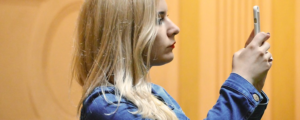
[bctt tweet=”“When working with an influencer, if they said, “Okay, tell me the copy you want me to post and give me a photo.” That’s not a partnership. Find someone who’s going to tell your brand’s story.” – @LADiverGirl #WhyCollaborate #podcast”]
When we’re working with a content partner that produces films, or TV shows, or music videos, we’re going to be able to work with them and encourage them for, you know, certain storyline messaging, certain imagery, certain logo shots. But we’re not going to direct. We’re not there to say, “In this scene, I need you to say this, this, and this, and then I need you to turn and do this, this, and this.” That’s not how it works.
It’s an extremely creative process. Every single studio, TV, network, media outlet all have different pricing structures. They all have different legal requirements they follow. It’s this colossal, swarming, chaos. I’ve spent 20 years learning how to take that chaos and make it into something that’s productive, and a cool partnership at the end of the day.
Potential Pitfalls to Influencer Marketing Partnerships
I like how you just described that. It made me think that you’ve come up with a way to harness that creativity and make it work for brands.
Are there any pitfalls that you might be able to share? Maybe some bumps along the road you could share with our listeners in terms of thinking about or engaging in this type of partnership?
Sure. One of the biggest things that I want to tell anyone: you need to figure out what you want from the very beginning. While it is a partnership, and you’re going to be working with someone and going back and forth to create it, once a contract is actually down in black and white that partner you’re working with isn’t so friendly anymore. Anything extra you ask for, they’re going to ask for more dollars.
So, we really like to try to push the brand to brainstorm as much as possible. And we also, at the same time, are pushing the influencer, or the celebrity, or the production in order to give as much as possible, and that’s when they’re most fluid. Before that black and white signature is locked and firmly ensconced on paper, that’s when the deal can still be created. Once it’s locked down, anything you ask for, you are going to get pushback or higher fees.
I like how you put it, that this whole negotiation is most fluid before the contract. I can really see how important that process is.
Another question on my mind: to what degree do you look at content creation? Is it set as to we’re expecting X number of assets to be delivered to us, you know, photographs, video or what it might be. Can you define that a little bit more for us?
Sure. So, if we’re talking about influencers, or celebrities, who are going to be going on property, yes. We are talking about literally naming whether you want Facebook, or Instagram, or Twitter, or Pinterest, or YouTube, and then also putting a defining minimum number of posts that you want from that. And then, of those posts, how many you need them to be a video, how many you need of them to be in a still image format.
You’re going to be defining beforehand what your preferred hashtags are, how you want the property, resort, location, whatever it might be, brand, referred to. Whether or not in the post, and depending, of course, on the type of platform, what the messaging is going to need to include. You’re not going to write the messaging for them, in most cases, but you are going to be giving them the words that need to be included, or the phrases that need to be included.
So, every little thing that you can think of with content creation, it really needs to be laid out, bulleted, and not left to chance. Otherwise, you will absolutely not get what you want. I mean, social influencers and brand partnerships, with all of this, it’s all about having a vision and laying out what the goal is.
Now, at the same time that I’ve said all of this, you also need to understand it’s a creative process. Especially when it comes to content on television or film, you are going to need to go with the flow. There are so many times we’ve done deals where we’ve had X, Y, Z, spelled out, and this is what the fee is, and this is how we’re going to do it. And something goes wrong. It just didn’t look good, and they cut it, or they just changed the story, or something happened.
But, if you have a good relationship, remember it is a partnership, they’re going to try to still work with you to maybe even come up with something better. But, you can’t be so stuck on what your firm end result goal is. You are going to need to be a little fluid, and flow, and just bend with that creative process. Know that you’re not working with people who you hired for an ad shoot. You’re working and walking into their world, and you have a little less control.
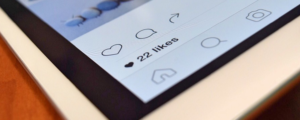
[bctt tweet=”“You can’t be so stuck on what your firm end result goal is. You are going to need to be a little fluid, and flow, and just bend with that creative process.” – @LADiverGirl #podcast”]
I think that’s great advice. Get into contract everything you need, but go with the flow. Understand what you want from the beginning, but also understand it is a creative process. There is a give and a take, and to be flexible. I can see how that would make it a much more successful engagement if you keep that in mind.
So, Stacy, I’m wondering if there are one or two projects that you’ve worked on in your career, and I’m sure there’s many more, that stand out in your mind as being amazing projects, and maybe even would provide a little inspiration for our listeners?
Well, I mentioned the Dianne Keaton movie, right? And it was with CBS Films, who is a little bit more nimble to work with than maybe a Warner Brothers or a Sony. It’s a minor studio that has distribution. They’re more eager, sometimes, to work with partners. But, in this case, we had the integration, we built out the signage on the set, we paid for the signage to be built on the set, we paid a fee for the exposure to appear on that set, we knew when and where it was going to be, and then we added in.
So, after the filming, because there wasn’t anything more we could really do in the actual movie itself, we partnered with their promotions department, and we built out some online promotions with chances to win trips to Aruba. These promotions were driven and pushed out by both the tourism board as well as by CBS Films through their partnerships with various media entities, which included radio, and print, and TV. We did a takeover one day with Wheel of Fortune, where they had a big feature on the movie. We brought in a win a trip type of opportunity there too. And there was a lot of other little things that we brought into that.
So being right in a film was a cool project. But, if you’re able to take it off and push out through social media, and you’re able to look at ways that you can add on through some PR efforts, and not necessarily more paid opportunities, that’s really where the big wins are, to me, to bring it home, to bring it into a full 360.
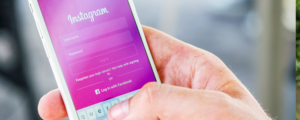
[bctt tweet=”“If you’re able to take a project off and push out through social media, and look at ways that you can add on through some PR efforts, that’s really where the big wins are.” – @LADiverGirl #WhyCollaborate #podcast”]
If you are doing digital advertising, are there assets from that film, or TV, or music, or celebrity partnership that you can get where you create some artwork that’s co-branded? That can help push out attention and bringing more awareness to that property, and at the same time link back to you, so you’re doing digital banner ads, or takeovers, or screenings. Or are you interested in certain markets and you have a film partnership, and now you’re going to maybe host the different screenings in that New York market, or LA market, or Chicago, or Dallas? You’re going to get more people to the film where they have a chance to get free tickets through something that you’re doing, or you’re just working with the studio to get them into the theater and then you’re running some additional promotions along with it.
There’s just so many unique ways to kind of build legs in, that’s what I think is cool.
That is really cool. Is there an average length of time, or does it vary on the project regarding when it’s filmed?
Usually, you’re looking at nine months to 18 months. 18 months is going to be a really big blockbuster film because of all the special effects that they have to do. Some of your more independent films as long as they have studio distribution can be nine months, 12 months. It just really depends on that time, but there’s enough time to have the opportunity to start building a campaign around that property because of that.
I think that that’s just a great example, and I appreciate your going into more detail on the Aruba example.
How to Work With Stacy
So, with all of these moving parts and opportunities, I’d like you to share with our listeners a little bit about how they might work with an agency like yours.
Can you talk a little bit about how that works, and the kinds of things clients should be looking for, whether they’re looking to work with you or considering someone else to help them in this area?
Sure, absolutely. Typically, most agencies like ours are going to work from some sort of retainer relationship. So, just like the PR agency, it’s not a one and done. It’s not like we have lists of every single opportunity that’s going to be the perfect match for that brand.
We’re actually going to have to go out to that influencer, to that celebrity, to that Hollywood content, film, television, music space, and we start educating people on the brand. We share what their attributes are, what makes them special. That starts percolating ideas that create a whole more organic feel, where people are aware of what those brands’ needs are, goals are, and they start seeing them. And it’s like it magic. We’ll be able to start finding opportunities that are just really good fits instead of having to force things to happen.
So, we first go out, and we bring Hollywood on to become part of the brand’s team through that education. That’s the first layer.
Then, at the same time, while we’re doing this and building through all the relationships that we have, celebrities with talent managers and with talent agents, or with feature films, or music, or television, the producers, the directors, the prop masters, the set decorators, the transportation, the stylists, all of those people. I’ve known them now for over 20 years. They haven’t gone anywhere, they have just moved from one project to another project or one client to another client. It’s a really small world of relationships that are very tightly held. When we have worked with someone previously, we’re able to continue that momentum with another brand client. That way we bring it to a place the brand can’t get to on their own. It also allows us to negotiate deeper rates and opportunities for people so they’re not paying as much as they would have to without us. So, with us, they’re paying less than without us, and they’re getting more, and that’s really, really powerful.
We’re also on set. So, we’re getting scripts; we’re reading films, we’re reading TV show scripts, we’re talking about scene changes, we’re talking with all those people I mentioned, looking very actively for the opportunity. Scenes change in a heartbeat. It’s amazing, where something will be rewritten, and the next week they’ll have a need for something, and our agency is very proactive. We’re here in Hollywood, and we can make it happen. We warehouse product, we have signage, we have the very turnkey ability to go out there.
And we also know how to deal with all the contracts. So, all of these different contracts that the studios need to have signed, a lot of times they’ll get sent over to a brand and get stuck in their legal departments for way too long. They’ll miss the shoot, because it’s just that fast of a process. So, we streamline everything as well.
That sounds great, and I like how it starts with the education. Thanks for describing how that works, because, you know, I think some folks might think it’s a phone call and place this product and that’s that. Where the way you described this whole idea of percolating ideas and looking for that right fit takes time, as well as those relationships that you described. So, I think that’s a really important point.
I also wanted to clarify; this is one type of marketing that fits in a bigger marketing strategy, right? And so a lot of times you do end up working with other agencies and integrating into other campaigns, is that correct?
We do, yeah. I would say we are 50/50. Fifty percent of our business comes from agencies who bring us on board because we’re niche specialists within the space, whether it’s for social influencers, celebrities, or product placement in television, and film, and music content, and then the other half are brands that we’re working directly with. So, a lot of the campaigns that we create, whether it’s directly with a brand or an agency. It allows all the players to participate.
So, we might work on a project that the brand’s PR agency then can extend, their media agency, their creative agency. If we’re going into creating some different content, digital ads or anything along those lines, we’re able to really come full circle and work with absolutely everyone. I mean, we’ll even work with brand survey agencies in order to get metrics after the partnership so that they can come back and say how well something did.
That’s great. Well, Stacy, this has been an awesome conversation, as I knew it would be. Before we say goodbye, can you share with our listeners how they can connect with you?
Absolutely. You can reach out to me via email: stacy@HollywoodBranded.com. Or call us at 310-606-2030. And you can check out also our website and then our blog, Blog.HollywoodBranded.com. I also have a podcast where I talk about marketing mistakes and how to avoid them with all things entertainment and social influencer, and you can find that on our website as well.
That’s great. Thank you for that, and I’m glad to have had you today, and we’ll look forward to talking with you again soon.
Sounds great. Thanks so much, Nicole.
Resources:
- Email: stacy@HollywoodBranded.com
- Phone: 310-606-2030
- Website: Blog.HollywoodBranded.com
We value your thoughts and feedback and would love to hear from you. Leave us a review on your favorite streaming platform to let us know what you want to hear more of. Here is a quick tutorial on how to leave us a rating and review on iTunes!
